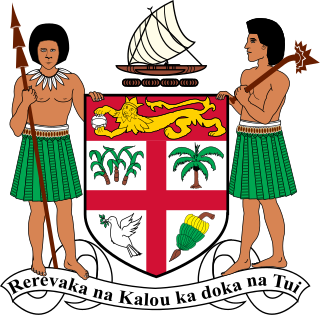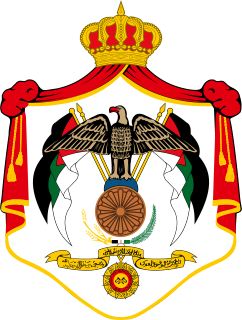A part of Eastern Africa, the territory of what is now Kenya has seen human habitation since the beginning of the Lower Paleolithic. The Bantu expansion from a West African centre of dispersal reached the area by the 1st millennium AD. With the borders of the modern state at the crossroads of the Bantu, Nilo-Saharan and Afro-Asiatic ethno-linguistic areas of Africa, Kenya is a truly multi-ethnic state.

Elections in Kenya take place within the framework of a multi-party democracy and a presidential system. The President, Senate and National Assembly are directly elected by voters, with elections organised by the Independent Electoral and Boundaries Commission (IEBC).
The Eighth National Parliamentary Elections 2001 were held in Bangladesh on 1 October 2001. 300 single-seat constituencies for the Jatiya Sangsad were contested by 1,935 candidates representing 54 parties and including 484 independents. The election was the second to be held under the caretaker government concept, introduced in 1996. The chief adviser of the caretaker government was Justice Latifur Rahman. The result was a win for the Bangladesh Nationalist Party with its leader Khaleda Zia becoming Prime Minister.

Communal constituencies were the most durable feature of the Fijian electoral system. In communal constituencies, electors enrolled as ethnic Fijians, Indo-Fijians, Rotuman Islanders, or General electors vote for a candidate of their own respective ethnic groups, in constituencies that have been reserved by ethnicity. Other methods of choosing parliamentarians came and went, but this feature was a constant until their final abolition in the 2013 Constitution.

The Orange Democratic Movement (ODM) is a centre-left political party in Kenya. It is the successor of a grassroots people's movement which was formed during the 2005 Kenyan constitutional referendum campaign. This movement separated in August 2007 into the Orange Democratic Movement Party of Kenya and the Wiper Democratic Movement – Kenya.

General elections were held in Jordan on 17 June 2003. They were the fourth contest held after the political liberalization started in 1989 and the first elections to take place since 1997. The number of voters who cast their ballots constituted almost 58.8 percent of registered voters, a record high in the last years, who total 2,325,496 of the country's 5.4 million citizens. The Kingdom's most prominent tribal representatives carried a large majority of the seats. The highest turnout, 86 percent, was registered in Karak, while the lowest ratio of voters, 44.62 percent, was in Amman.

The Indian general election of 1951–52, held from 25 October 1951 to 21 February 1952, was the first election to the Lok Sabha since India became independent in August 1947. It was conducted under the provisions of the Indian Constitution, which was adopted on 26 November 1949. Elections to most of the state legislatures took place simultaneously.
In India, a certain number of political positions and university posts are held for specific groups of the population, including Scheduled Castes/Scheduled Tribes, Anglo-Indians and Women.

General elections were held in Northern Rhodesia on 20 and 21 January 1964. There were two voter rolls for the Legislative Council, a main roll that elected 65 seats, and a reserved roll that elected 10. Africans elected the main roll, whilst Europeans elected the reserve roll. Other ethnicities were allowed to choose which roll to be part of. The United National Independence Party won the elections, taking 55 of the common roll seats. Its leader, Kenneth Kaunda became Prime Minister, leading the country to independence in October that year, at which point he became President. Voter turnout was 94.8% for the main roll and 74.1% for the reserved roll.

General elections were held in Northern Rhodesia on 30 October 1962, with by-elections for several seats held on 10 December. Although the United Federal Party won the most seats in the Legislative Council, and Northern Rhodesian African National Congress leader Harry Nkumbula had made a secret electoral pact with the UFP, Nkumbula decided to form a government with the United National Independence Party.

General elections were held in Kenya on 6 December 1969, the first since independence in 1963. The country had become a de facto one-party state after President Jomo Kenyatta had banned the Kenya People's Union on 30 October, with Kenyatta's Kenya African National Union being the sole party to participate in the election. Although the post of President of Kenya was due to be elected at the same time as the National Assembly, Kenyatta was the sole candidate and was automatically elected without a vote being held.

General elections were held in Kenya on 14 October 1974. At the time, the country was a de facto one-party state with the Kenya African National Union being the sole party to participate in the election. 740 KANU candidates stood for the 158 National Assembly seats, with 88 incumbents defeated. Voter turnout was 56.5%. Although the post of President of Kenya was due to be elected at the same time as the National Assembly, Jomo Kenyatta was the sole candidate and was automatically elected without a vote being held. Following the election, a further 12 members were appointed by President Kenyatta.

Parliamentary elections were held in Italian Somaliland in February 1956. The result was a victory for the Somali Youth League (SYL), which won 43 of the 60 elected seats in the Territorial Council.

General elections were held in Kenya Colony on 2 April 1924. The elections were the first under a new Constitution which saw suffrage extended to Indians and Arabs, who were allotted five and one elected seat in the Legislative Council respectively, alongside the eleven elected seats for the white population, although appointed members were still the majority. Whilst all adult Indian residents were given the right to vote, in the Arab community only men literate in Arabic or Swahili and resident in the country for two years were enfranchised, as the community had requested that women not be given the right to vote. One member was appointed to represent the majority black population.

General elections were held in Kenya Colony on 12 February 1927.

General elections were held in Kenya Colony in 1931. Five of the eleven white seats in the Legislative Council were uncontested, with Lord Delamere amongst those returned unopposed. Unlike previous elections, which were boycotted by the Indian population, this time the community participated. Fourteen candidates including two independents contested the five Indian seats. However, seven of them declared that they would not take their seats on the Council if elected until the separate voter rolls for whites and Indians were scrapped.

General elections were held in Kenya Colony in 1934, with the first seats elected on 28 March. Four candidates were returned unopposed in the eleven Europeans constituencies, whilst the remaining seven constituencies were contested by 18 candidates. For the five Indian seats, there were 17 candidates. Voter turnout in the White seats was the highest since elections were introduced. The Council convened for the first time after the election on 24 April.

General elections were held in Northern Rhodesia on 20 March 1959, although voting did not take place in two constituencies until 9 April. The United Federal Party (UFP) was expected to win the elections, and did so by taking 13 of the 22 elected seats on the Legislative Council.

General elections were held in Kenya in May 1948.

The Legislative Council of Kenya (LegCo) was the legislature of Kenya between 1907 and 1963. It was modelled on the Westminster system. It began as a nominated, exclusively European institution and evolved into an electable legislature with universal suffrage. It was succeeded by the National Assembly in 1963.









